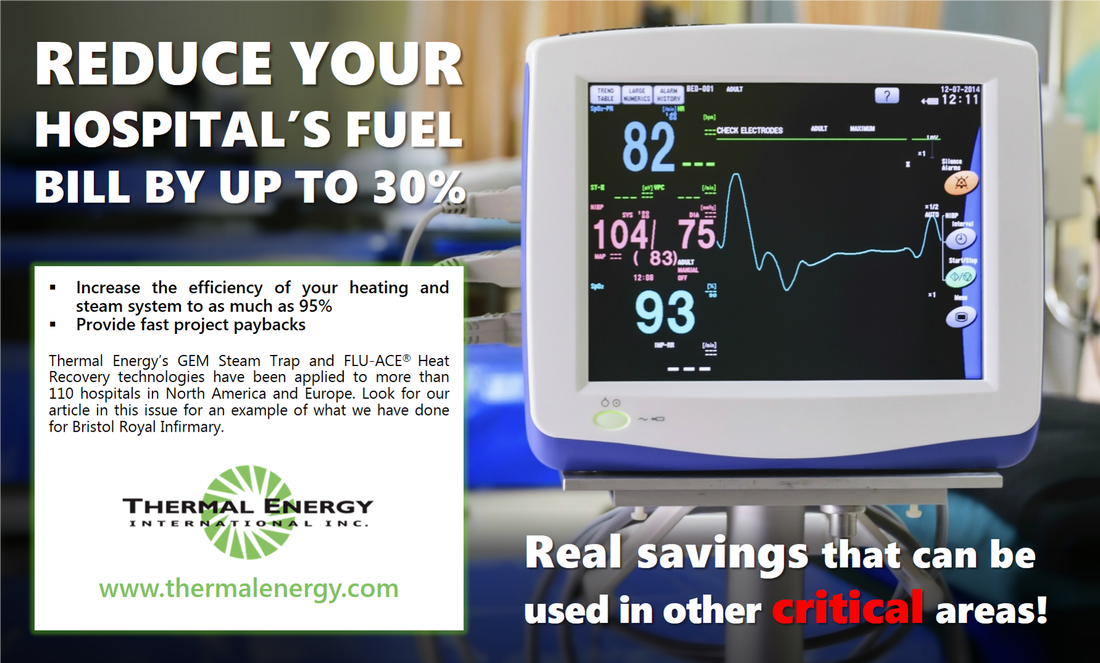|
Hospitals' budgets are constantly under pressure. Programs have been cut, staff laid off or replaced with lower wage employees. Nurses are over-worked. Waiting times continue to increase. But wait, what if instead of cutting staff and essential services, hospitals became more energy-efficient? That's right - instead of cuts to critical areas, hospitals could cut their energy bills using existing technologies. And the energy savings that can be realized are substantial. Hospitals are among the most energy-intensive facilities. In terms of Btu per square foot, for example, inpatient health care facilities are the second most energy-intensive facility type across the United States, according to the Energy Information Administration. Just what makes them so energy-intensive? Well for starters, hospitals are open 24 hours a day and are occupied by hundreds or thousands of employees, patients, and visitors. They tend to have sophisticated heating, ventilation, and air conditioning systems to control temperatures and air flow. Moreover, many energy-intensive activities occur in hospitals: laundry, medical and lab equipment use, sterilization, food service, refrigeration, and computer and server use. Being proactive with energy management can generate opportunities for savings. Reducing energy consumption results in a dollar savings on utility bills. For example, an organization that has installed on-site renewable energy (and has retained ownership of that energy) could sell its Renewable Energy Credits to a utility that needs to meet Renewable Portfolio Standards (RPS). Another savings example is installation of light fixtures that use LED or CFL bulbs, which can save both energy and maintenance costs.
Some of the possible improvements at the structure level are replacement of burners and use of stack economizers on boilers (15% to 20% of the energy used in a boiler plant is lost up the boiler stack), installing a cogeneration (or combined heat and power) system, converting mechanical steam traps over to venturi orifice steam traps, and more. Just by converting mechanical steam traps over to venturi orifice traps such as the GEM Trap can result in a 10% reduction in fuel costs. Again, we're talking about existing, proven technologies that can help hospitals save money by reducing their fuel bills while also lowering their greenhouse gas emissions. Take for instance, Thermal Energy International --- their energy efficiency solutions can increase the efficiency of a hospital's heating and steam system to as much as 95% with typical project paybacks (for their combined technologies) within three to five years. With as much as 50% of a hospital's total budget being directed towards energy spending, clearly there are some opportunities to be had.
0 Comments
OTTAWA, ONTARIO – July 5, 2016 – Canadian cleantech company, Thermal Energy International (TSXV: TMG) is targeting the attractive cogeneration market by combining its proprietary FLU-ACE heat recovery technology and engineering expertise with existing power generation technologies to provide the highest efficiency combined heat and power (CHP or cogeneration) solution available.
The Company will initially be targeting some of its key corporate accounts with whom they have strong relationships as well as specific regional markets where attractive incentive funding is available for the design and implementation of cogeneration projects. About Thermal Energy International Inc.
Thermal Energy International Inc. is an established global supplier of proprietary, proven energy efficiency and emissions reduction solutions to the industrial and institutional sectors worldwide. We save our customers money and improve their bottom line by reducing their fuel use and cutting their carbon emissions. Our customers include a large number of Fortune 500 and other leading multinational companies across a wide range of industry sectors. Thermal Energy is also a fully accredited professional engineering firm, and can offer advanced process and applications engineering services. By providing a unique mix of proprietary products together with process, energy, environmental, and financial expertise Thermal Energy is able to deliver unique and significant financial and environmental benefits to our customers. Thermal Energy's products include; GEM® - Steam traps, FLU-ACE® - Direct contact condensing heat recovery, and Dry-Rex® - Low temperature biomass drying systems. Thermal Energy International Inc. has offices in Ottawa, Canada as well as Bristol, U.K., United States, Italy and China. The Company’s common shares are traded on the TSX Venture Exchange (TSX-V) under the symbol TMG. For more information, visit www.thermalenergy.com. |
OverviewWe believe it is essential that we move to a clean energy economy and lessen our dependence on fossil fuels this decade. This blog shares ideas, news and other information about better, cleaner ways to meet our energy needs. Archives
December 2017
Categories
All
|




 RSS Feed
RSS Feed
